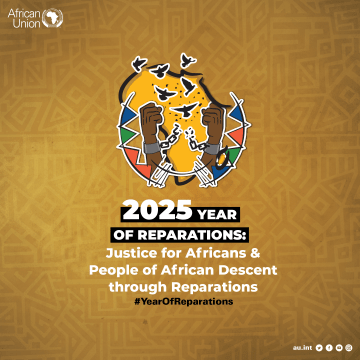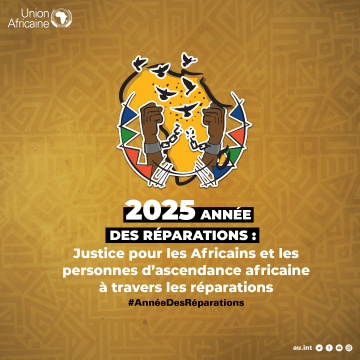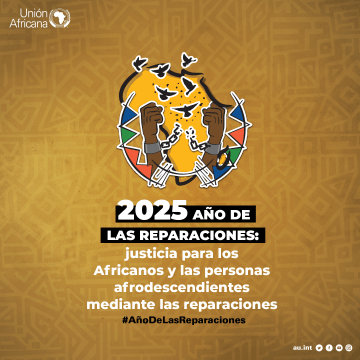- 5.1 Working Methods
The working methods of the Commission are essential to the achievement of the overall goal, outcomes and outputs of the Strategic Plan. The Commission is composed of 11 Members who serve in their personal capacity in line with Article 31 of the African Charter. In accordance with Article 42 of the African Charter, the 11 Members elect a chairperson and a vice- chairperson among themselves. The chairperson and vice-Chairperson serve for a two-year renewable term.
The Commission is headed by a bureau composed of the chairperson and vice-chairperson. The bureau, operating on a part-time basis, has the responsibility to coordinate the activities of the Commission, taking decisions on matters of emergency when the Commission is not in session and supervision of the Commission’s Secretariat. This makes the bureau a central player in the implementation of the Strategic Plan.
Under the next Strategic Period, the Chairperson of the Commission will work on a full-time basis. Jointly with the Bureau, (s)he will spearhead the implementation of the Strategic Plan.62
The Commission’s Secretariat is headed by a Secretary who is appointed by the Chairperson of the AUC in line with Article 41 of the African Charter. The Secretariat carries out the daily technical and administrative functions of the Commission. The detailed workings of the Commission are regulated by the Commission’s Rules of Procedure.
The Commission holds both ordinary sessions and extra-ordinary sessions:
- Ordinary sessions - The Commission holds two ordinary sessions each year over 21 days . The practice has been that ordinary sessions are held in April/May and October/December.
- Extra-ordinary Sessions - The Commission also holds extra-ordinary sessions which are convened by the Commission’s Chairperson upon a request by the Chairperson of the AUC or majority of the members of the Commission. In the recent past, the Commission has established the practice of having two extra-ordinary sessions every year over 15 days – an indication that the workload of the Commission does not currently match its capacity.
The Commission’s Secretariat will bear the primary responsibility for coordinating and where possible, implementing the activities outlined in the Strategic Plan’s implementation matrix. The Secretariat will assume responsibility for the management of financial, material and human resources allocated for the implementation of the Strategic Plan in line with the AUC administrative and financial procedures. In the execution of these responsibilities, the Secretariat will be supervised by the Commission’s bureau. On the internal structure of the
62This is a proposal that emerged repeatedly from the consultations and should be part of the Commission’s engagement with the AU Institutional reforms process for consideration as part of the new restructuring of AU organs and Institutions. Other issues raised include increasing the number of Commissioners and restructuring the Secretariat
Secretariat, the focus can be on engaging the relevant structures (AU HR) to speed up recruitments as approved.
To achieve the overall goal, outcomes and the expected outputs of this Strategic Plan, the Commission will foster partnerships with relevant stakeholders and partners within and beyond the AU human rights system. The Commission will therefore rely on collaboration, coordination and experience sharing in the implementation of the Strategic Plan in order to maximise the resources availed to it.
The Commission will collaborate with AU Organs and AGA Platform Members that have a mandate to promote and protect human rights in particular, in order to create synergy and to avoid duplication of efforts. The Commission engages AU Member States through the relevant ministries and institutions such as NHRIs considering that Member States are the primary duty bearers for human rights obligations under the African Charter. Considering their proximity to States, the Commission will collaborate with regional courts and regional mechanisms that have a responsibility to protect human rights.
The Commission will also collaborate with youth-led and youth serving as well as women’s rights organisations, human rights defenders, and CSOs more generally because of their critical place in the promotion and protection of human rights in Africa. The Commission will also build relationships with academic institutions, research institutions and think tanks in Africa with the objective to tap into their expertise and knowledge on the promotion and protection of human rights in Africa. The Commission will collaborate with media outlets in Africa with the aim to increase its visibility and most importantly to popularise and promote respect for human rights across the Continent. The Commission will also work with donors, UN and other multilateral agencies to ensure the outcomes and outputs outlined in the Strategic Plan are attained. These strategic partnerships and collaborations will be instrumental to the success of this Strategic Plan by the Commission.
The Commission will manage the resources allocated for the implementation of this Strategic Plan in line with the AUC’s financial rules and regulations as well as budgetary and accounting policies and procedures. The Commission will work towards elimination of operational bottlenecks, avoidance of unnecessary bureaucracy, enhancement of accountability, value for money and proper stewardship of resources allocated to the implementation of the Strategic Plan.
The Commission will also leverage on the operational capacities of AU organs and institutions and AGA Platform Members particularly to benefit from their respective comparative advantages and to bolster support for human rights protection and protection based on economies of scale. Importantly, the Commission will promote and ensure judicious use of resources allocated to the Strategic Plan through adoption of best practices in financial management and internal financial control systems.
The assessment of risks likely to be faced in the implementation of this Strategic Plan is important to the realisation of its outcomes and outputs. In addition to outlining the risks, actions to mitigate the risks are also highlighted below.
RISK | Impact | Probability | MITIGATION |
Limited political will and action by some States to implement the Commission’s recommendations | High | High | Commission’s monitoring, follow-up and implementation unit, direct engagement and follow-up with the relevant State departments, coordination with other AU/UN organs |
Perception among State Parties that the recommendations of the Commission are not legally binding | High | High | Direct engagement and follow-up with the relevant State departments, awareness raising initiatives, coordination with other AU organs such as PAP, APRM and other AGA Platform members that also engage with AU Member States. |
The Commissioners work on a part- time basis, thus they have limited time to implement the Strategic Plan | High | High | The Chairperson of the Commission works on a full-time basis, the Bureau to spearhead the implementation of the Strategic Plan and establishment of an effective monitoring, follow-up and implementation unit |
The Secretariat remains under- staffed | High | High | Commitment to recruit competent and dedicated staff for the Secretariat. The Chairperson shall engage with the AUC leadership with the view of expediting the HR recruitment processes as per the agreed staffing complement. |
Inadequate funding to implement activities and programmes outlined in the Strategic Plan | High | Medium | Continuous sensitisation of Member States, in particular the Budget committee, for the allocation of sufficient funds to the Commission, mobilisation of funds from partners where possible, strengthening the partnership strategy with the UN system and other actors supporting the work of the Commission. |
Continued centralisation of administrative processes by the AUC which may impede the pace of implementing the Strategic Plan | High | Medium | Engagement with the AUC with the view of agreeing to appropriate modalities to facilitate the work of the Commission and remove bottlenecks. |
Effective monitoring, evaluation, and learning (MEL) will be critical to the success of the Strategic Plan. The purpose of MEL will mainly be to track the implementation of the Strategic Plan, measure the effectiveness of the actions taken by the Commission, and tease the lessons and continuously feed them back into programming for greater impact.
The Commission will ensure effective MEL on the outcomes, outputs and impact. MEL will be guided by the indicators outlined in the Strategic Plan’s Monitoring and Evaluation Framework.
The Commission will establish a Monitoring, Follow-up and Implementation Unit which will serve as the focal point for monitoring, evaluation and learning. MEL will also be conducted through consultative review mechanisms with relevant stakeholders.
The Monitoring, follow-up and implementation Unit will ensure timely production of quality and disaggregated data where necessary. The Activity Reports, Annual Plans and Annual Reports will reflect the indicative activities outlined in the implementation matrix. A mid-term evaluation of the implementation Plan will be undertaken in December 2021 by an independent consultant. Following the mid-term evaluation, follow-up actions will be undertaken, and necessary adjustments made. The learnings and lessons drawn will be important in informing and ensuring improved decision-making in the course of implementation of the Strategic Plan.
In the implementation of the Strategic Plan, the Commission will have a strong commitment to knowledge management, including knowledge generation, curation, dissemination and uptake. Knowledge generated through implementation of the Strategic Plan, monitoring and evaluation as well as the reports will be carefully and meticulously drafted and shared with relevant stakeholders. Essentially, reports produced after engagement with stakeholders will also be published and extensively disseminated. These reports will mainly underscore lessons learnt and good practices established in the course of implementing the Strategic Plan.
In generation of knowledge, the Commission will also leverage on its more than 30 years’ experience in the promotion and protection of human rights. The Commission will also build synergy and collaboration with AGA Platform Members to generate knowledge on promotion and protection of human rights in Africa. This commitment to knowledge and learning management is important to the attainment of the overall goal, outcomes and outputs of the Strategic Plan because it ensures that implementation of the Strategic Plan is evidence-based.
During implementation of this Strategic Plan, the Commission will be guided by its Communication Strategy to enhance communication and visibility. The Commission will work with networks of communication experts and gender-sensitive and human rights journalists to strengthen the visibility and outreach of its activities and impact in implementation of the Strategic Plan. The Commission will engage youth who constitute 65% of the Continent’s population and women to increase awareness of the work of the Commission and human rights more broadly. The Commission will also rely on modern technology to urge compliance with human rights standards within the Continent. Importantly, the Commission will ensure efficient channels of communication with the relevant stakeholders such as States, civil society organisations, NHRIs, donors etc.








